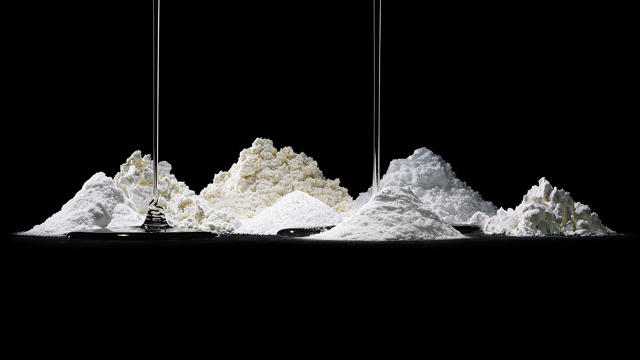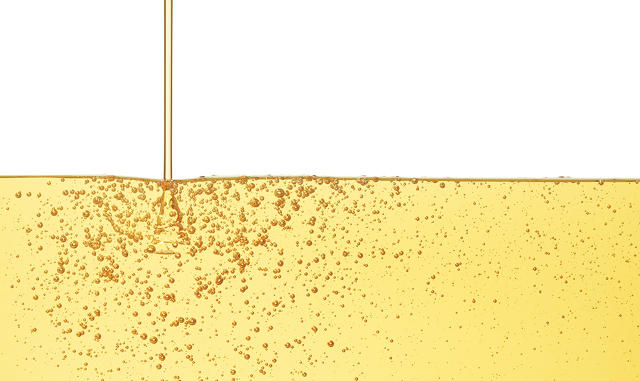A Visual Guide To All Of Those Unpronounceable Ingredients In Processed Food
What do those mystery chemicals actually do? Take a tour of the most common additives to find out how food scientists modify what you eat.
If you’ve ever perused an ingredient list and wondered why there’s polyglycerol polyricinoleate in your candy bar or tertiary-butylhydroquinone in your cereal—or what, exactly, those things are—a new book has the answers.
Ingredients includes close-up photos of 75 common additives, along with descriptions of their origins and use. Ethylenediaminetetracetic acid sucks up any trace metals in food to stop oxidation. Disodium inosinate multiplies the umami taste of MSG by a factor of six or eight. Carrageenen, made from seaweed flour, binds up fats and proteins in chocolate milk and is also used in everything from salad dressing to beer (and air fresheners, shoe polish, and personal lubricant).
The book, which will come out in September, wasn’t intended as a polemic on the potential evils of additives. It’s more of a simple exploration of ingredients that most of us know nothing about, even if we’re eating them on a regular basis.

“My goal for this project from the very beginning was to take an expository stance on the subject matter,” says photographer Dwight Eschliman. “Food science has created some catastrophes for sure, but it’s also created some amazing things. Right now it’s everyone’s favorite whipping post. There are a lot of people out there with strong opinions; I simply wanted to share information.”
“Dwight and I both really are just curious guys,” says author Steve Ettlinger, who worked on the book with Eschliman and has also written the similar work, Twinkie, Deconstructed. “We’re fascinated by this stuff.”
They got to know each ingredient intimately in the studio. At one point, when Eschliman photographed an accidentally concentrated form of diacetyl, they had to evacuate the area. “Smelly stuff,” Eschliman says.
Ettlinger was fascinated to learn about taurine, named for the Latin word for bull (taurus), which was originally made from bull semen—and which happens to be part of Red Bull, whose fans like to cling to the urban legend that they’re drinking something sourced from bull testicles.
“The manly night revelers who drink Red Bull like that idea,” he says. “I thought it was hilarious to find that it’s actually synthetically produced, and it’s also not that big a deal. It’s an amino acid your body makes … not an obscure folklore remedy that they thought gives you incredible energy.”

Though Ettlinger and Eschliman say they’ll leave nutritional commentary to others, neither tends to eat many processed foods. “Like Dwight, I prefer fresh whole foods, and I think most people do,” Ettlinger says. “I’m not at all a fan of the processed food world that we live in. On the other hand, I acknowledge the immense utility and safety of most of these ingredients.”
Of course in some cases, their safety isn’t necessarily yet proven, and more and more companies are starting to take artificial ingredients out of food—like General Mills, Nestle and Subway. (It’s worth noting that even something that might have seemed natural at Subway—like the egg in a breakfast sandwich—is made with more than a dozen ingredients other than an actual egg).
“One thing that has always sort of gotten me is that a lot of scientists I’ve spoken to over the years working on the Twinkie book would say things like ‘This has been in use for 50 years, of course it’s safe,'” Ettlinger says. “But Crisco, one of the oldest popular artificial food ingredients around, is the one that’s been killing us. Not anymore. But the fact is that there’s a pretty big oops. And there are others that have come and gone over time. Still, I don’t freak out about it. Most of these we eat in minuscule amounts.”
[All Photos: Dwight Eschliman]
Fast Company , Read Full Story
(138)














